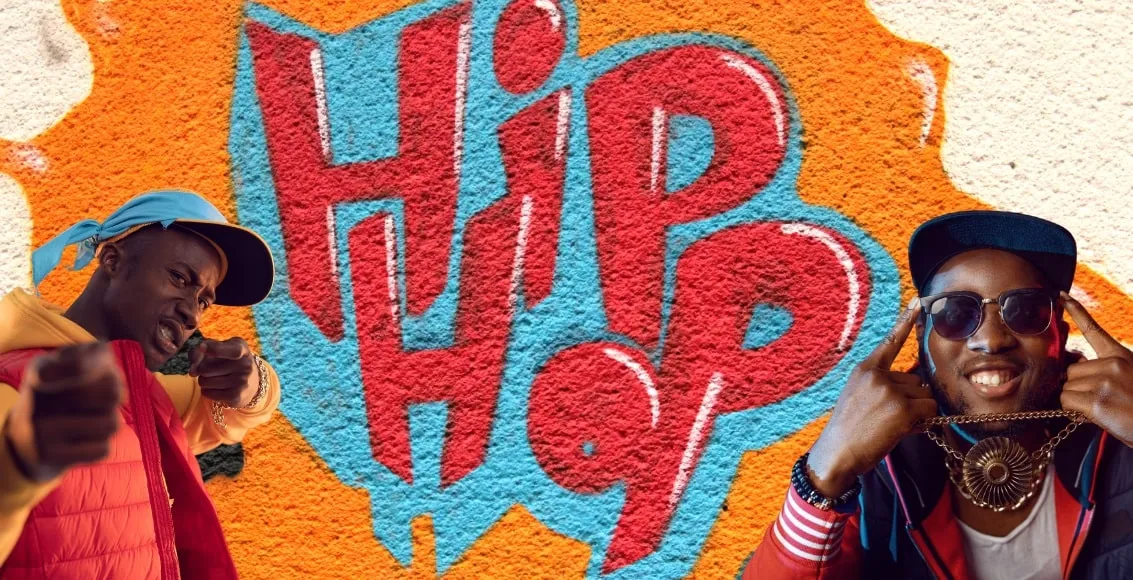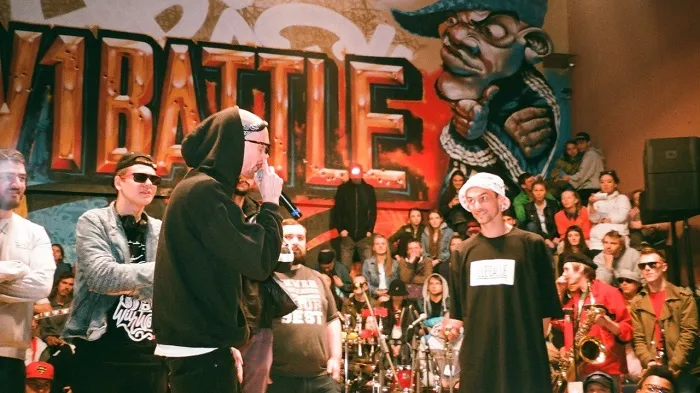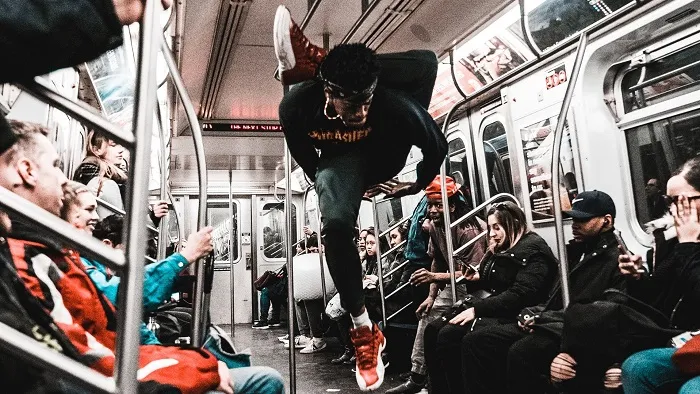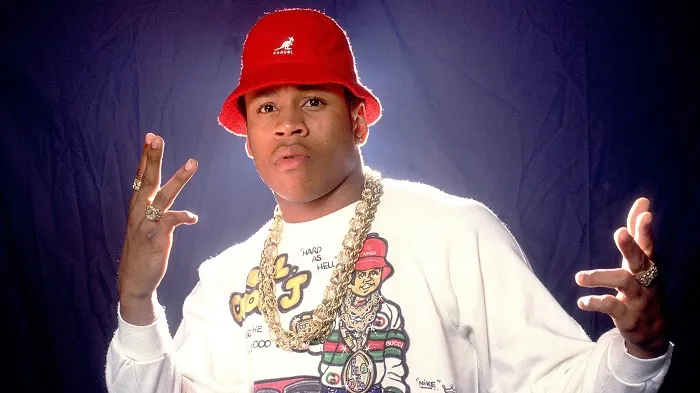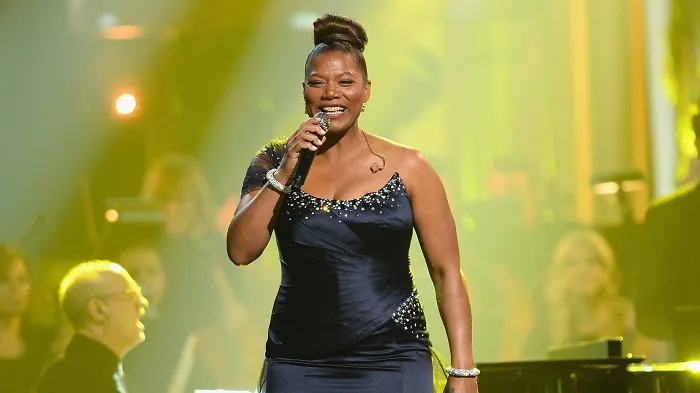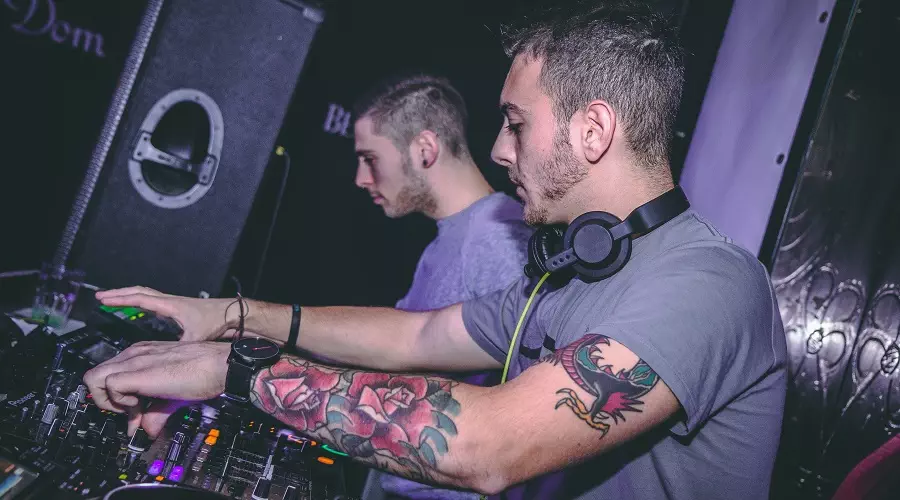Hip-Hop music grew from a house- and block-party DJing fad into one of the biggest music genres in the past 50 years.
A lot of people see Hip-Hop as clever rapping to rhythmic music, but the hard-core audience knows better than that. It’s an honest depiction of personal feelings and ideas that are so easy to bond with.
Hip-Hop is a culture in its own right. And it has developed steeply since its early days in the 1970s. It’s also rife with contradictions that are sometimes ironic.
The music genre that started in the Bronx soon became studded with billionaire stars showing off their bling. Local bands who claimed that Hip-Hop was exclusive to the inner streets of New York soon spread all around the world. And the tough music genre that bragged about its misogynistic slant eventually celebrated many women rappers!
If you’d like to know what is Hip-Hop music, read on. This is the whole story.
In a Nutshell, What is Hip-Hop Music?
Hip-Hop is more of a culture than a music genre. It’s a melange of rhythmic tunes and rhyming words that boomed in the 1970s and 80s.
The most familiar aspect of Hip-Hop is rapping lyrics to a background of lively music. Other ingredients of it include street art, articulating personal pain, and heavy use of techno music.
What are the Differences Between Hip-Hop and Rap?
According to various Hip-Hop pioneers, even though both terms are used interchangeably, Rap is a very different culture from Hip-Hop. One artist has an opinion about the matter that many others agree with. KRS-One says “Rap is something you do, Hip-Hop is something you live.”
Hip-Hop purists believe that only those who have lived through the hardships of underground life can talk about it. Every aspect of Hip-Hop culture matters. Even the graffiti, the street dances, the poetic duels, the toasting, and the turntabling.
To these folks, the main difference between Hip-Hop and Rap is the difference between an original and an offshoot. They might not speak badly about Rap, but they make a point of pointing out that Hip-Hop and Rap aren’t mutually exclusive.
Interestingly, these views aren’t exclusive to old-school Hip-Hop icons or enthusiasts. Many new-age Hip-Hop performers and their followers share the same sentiment. And that’s probably why the echoes of classic Hip-Hop are still heard even 50 years after the genre was created.
Where Did the Name ‘Hip-Hop’ Come From?
It’s said that back in the 1950s, teen parties rife with fast beats and dancing were slightly ridiculed by grown-ups. The older generation seemed to call these jumping youngsters “hippity hops”. That might’ve been an inspiration for what happens next.
The more famous story of where the peculiar name ‘Hip-Hop’ came to be mentions a friendly banter that ended up with the conception of a genre label.
Kevin Smith was a Bronx DJ and rapper who went by the name Lovebug Starski. He was playfully accosting a friend of his who had just been drafted and kept repeating the words hip-hop-hip-hop. That was his way of echoing the martial steps, but the incident didn’t end with the shared laughs.
Lovebug Starski seemed to like the way the words slid on his tongue, and he was seen using them at various parties later on. Besides the chants and the unforgettable catchphrases like “Make money money, make money money money,” he would often energize the crowds by something like “I said a hip-hop, a hipp it, hippy-dippy, hip-hip-hop and you don’t stop.”
There’s more. Afrika Bambaataa, who’s viewed as The Godfather of Hip-Hop, is also among the very first to use the term publicly in reference to this type of music. Right before the name Hip-Hop became a thing, this party DJing style was often described as Disco Rap.
The term Hip-Hop became legit as it appeared in print for the very first time in 1979. It was in an interview with Bambaataa in The New Pittsburgh Courier, where the description was dropped quite casually.
The matter solidified in a subsequent interview in The Village Voice in 1984. But this time, Bambaataa gave a much more detailed account of that emerging genre in an article titled “History of Hip-Hop”.
The Main Characteristics of Hip-Hop
Hip-Hop is a derivative of 1970s Disco and Funk music, which were in turn offshoots of the larger genre R&B. The important aspects of Hip-Hop weren’t the music style as much as its beat. So you’d also find Hip-Hop songs that are clearly affected by Jazz, Rock, or Soul.
The unwavering traits of Hip-Hop were actually outside the scope of music. Here are some of them.
Street Art and Graffiti Paintings
Spraying large-sized murals around the subways and other public buildings started to be noticeable in the early 1970s. Among the pioneers of the movement was a young Greek immigrant who went by the name Taki 183.
By 1975, several New York City kids from Queens, the Bronx, and Brooklyn colored whole areas with spray paints. They left designs of their nicknames, their favorite fictional characters, and anything that mattered to them.
The authorities weren’t pleased by what they saw as vandalism, while art galleries clamored to display the emerging art. More importantly, it became an essential backdrop to Hip-Hop block parties.
Turn-Tabling
The DJs who created the Hip-Hop style, like DJ Kool Herc, started out with the technique of running two turntables playing the same song. They discovered that the audiences were more into the beat parts of the song than the melodic parts.
Using the turn-tabling techniques, they managed to extend the beat breaks to much longer segments. Moreover, they’d often talk over these breaks to enthuse the crowds even more. This was the earliest form of rapping.
Hip-Hop is clearly part and parcel of that early turn-tabling discovery. Afrika Bambaataa, Grand Wizard Theodore, and Grandmaster Flash were instrumental in developing this style.
Rapping, MCing, and Toasting
The deepest roots of rapping can be found in African and Latin music, where the lyrics weren’t always vocalized along with the tunes, but rather, talked over the music. The more recent versions of Rap can be spotted with the DJs, and later on, in street parties that turned into word duels.
Gil Scott-Heron, Amiri Baraka, and various other Bronx poets came to prominence at the time. Their words were often heard in the recordings of George Clinton and Isaac Hayes. Plenty of the rhymed exchanges were outright insults, and these merged with the Jamaican form of rhythmic speech known as toasting.
Rap might not have been a basic ingredient in early Hip-Hop songs, but it soon became an indispensable feature of the genre.
B-Boing: The Dance, Attitude, and Style
The bad-boy attitude of the Hip-Hop artists, along with their unique dress style, and dance moves are characteristics of Hip-Hop you can spot a mile away!
This styling is among the main attractions that drew in huge amounts of Hip-Hop enthusiasts worldwide. It’s also what helped media and fashion moguls like Puff Diddy and Jay-Z to build their empires. For these guys, it was never just about the songs.
Old School Hip-Hop
The exact origin story of how Hip-Hop came to be is a bit hard to find. There are a few versions of how and who and where. But the timing and the setting are often the same. The early 1970s in the Bronx is a total consensus.
The Origins
The more popular version of who was behind the creation of Hip-Hop attributes the honors to DJ Kool Herc, whose real name was Clive Campbell. It was a hot night in August of 1973. The place was a birthday party.
It was held in the recreation room of an old apartment building in the Bronx. The exact location of that iconic place was 1520 Sedgwick Avenue, New York City.
Back in the day, Kool Herc was an 18-year-old wannabe DJ. He was an immigrant who had left Jamaica – but not its beats.
He paired the booming sound systems to his native Jamaican rhythm. And the inner-city parties were on fire with that new style.
He played the two turntables like a pro, extended the parts where the beat rocked the most, and he talked over the music, giving life to the dancefloor. DJ Kool Herc toasted and spun, and without really noticing, he was laying the true foundations of Hip-Hop.
The party on that August night in 1520 Sedgwick Avenue was filled to the brim with a hard-core Bronx crowd. They became totally hooked to the music and fell in love with the beat that woke up their senses in a way they’d never experienced before.
From Block Parties to Label Records
Hip-Hop became legit around 1979 with the release of Sugarhill Gang’s song Rapper’s Delight. It was part of an adventure taken on by the independent label Sugar Hill. Luckily, this emerging and slightly unfamiliar music genre topped the charts for a very long time.
The stars of that trail-blazing album were non-other than Grandmaster Flash and the Furious Five, in addition to Kurtis Blow, and the Cold Crush Brothers. It’s said that their Grandmaster Caz is actually the true creator of the lyrics that stood out in Rapper’s Delight.
New School Hip-Hop
The next phase of Hip-Hop goes roughly from 1979 to 1993. The genre experienced some incredible changes during this period, but somehow, managed to maintain its soul and core values.
Rap Meets Hard Rock
R&B tunes were often merged with the Rap songs of Hip-Hop. But that wasn’t written in stone, and it was only a matter of time before bands like Run-DMC broke the mold.
Hard Rock was much too present in the song and much too loud, so talking over it wasn’t easy. However, the new trend was more than successful, and the hard beats of Rock went well with the overcharged lyrics of Rap.
The Beastie Boys were also among the bands that went all-in with the Punk, Funk, and Hard Rock beats. They were also the first all-white Hip-Hop band, which attracted a wider and more nuanced audience.
Romanticizing Rap
Not everything in the world needed to be a fight and a struggle, and with the emergence of many middle-class Hip-Hop bands, the earlier subjects of Bronx Rap became a little irrelevant. Matters of the heart and other emotional issues were bound to find a release at some point, and they did. Big time!
LL Cool J is among the pioneers of romanticized Hip-Hop. He signed with Def Jam in 1984, and his first single, I Need a Beat, made a phenomenal 100,000 copies just weeks after its release. He followed that with I Need Love in 1987, and a piece of West Coast Rap which was Goin’ Back to Cali in 1988.
Lady Rappers
Dana Elaine Owens, also known as Queen Latifa, took the rapping scene by storm in 1988. She was only 18 years old when she released her first single Wrath of My Madness.
At the time, she was a college student at the Borough of Manhattan, but she managed to get a demo tape to the right people. And shortly afterward, she signed a deal with Tommy Boy Records.
Her debut album All Hail the Queen came right after that, and from then on she never slowed down. She also made a stellar career in acting and won various awards along the way. One of Queen Latifa’s biggest achievements is opening the door wide for the next generation of female rappers.
Salt-N-Pepa was an all-girl rapper band that gained huge popularity in 1985. Their single Push It, which was released in 1987, hit number one in three countries and stayed in the top 10 around the globe for a while.
Their album Hot, Cool & Vicious was just as phenomenal, and it quickly sold more than 1 million copies in the US. This energetic Hip-Hop girl band was the first to achieve gold and platinum status.
Going Out of New York
For more than two decades, Hip-Hop remained a phenomenon exclusive to New York. But that was bound to change. The earliest outsiders were DJ Jazzy Jeff and Will Smith, who came from Philadelphia and made big waves with their different styles and ‘fresh’ perspective.
Next, came the provocative 2 Live Crew all the way from Miami, where the lyrics again reflected a very different mood that was received with open arms. M.C. Hammer emerged from California around the same time and pretty much rode the wave of Blue Skies Rap.
The strongest out-of-New York Rap movement came in the 1990s from LA, and it was soon labeled as West Coast Rap. Its best players were Ice Cube, Dr. Dre, Easy E., and N.W.A.
Gangsta Rap
Rap and Hip-Hop were always tied up to the underground world since the inception of the genre. And at some point, the rough side of this music style went all out with its affiliations. The audacious, rough, and totally forthright lyrics drew in a huge audience.
Dr. Dre and Tupac Shakur were among the leaders of that direction. Most of the hits were suitably released by the label Death Row Records. This pretty much started the fiery feud between East Coast Rap and West Coast Rap.
The Golden Age of Hip-Hop
The late 1990s and early 2000s were by far the best years of Hip-Hop. The genre broke out of the confines of New York, the whole of the US, and into the richest cities of the world. The material aspects of bling Hip-Hop came into full focus with the popularity of MTV and digital media.
The business of making Hip-Hop songs extended far beyond the music industry. The sales of new fashion, accessories, stylized luxury cars, liquor, and even electronics boomed with the release of each new hit.
Stars like Puff Diddy, Eminem, and Lauryn Hill were brilliant at that time.
The Hip-Hop Scene 50 Years After its Inception
Today’s Hip-Hop is definitely different from how things started 50 years ago. Alternative Hip-Hop, Trap music, and Mumble Rap are becoming mainstream nowadays.
Various Hip-Hop stars who lived through the golden years of Rap expressed their feelings of unfamiliarity around these styles. The excessive use of autotuning, plus the hard-to-discern lyrics seem to turn off a lot of old-schoolers. However, the response from the turn-of-the-century younger audience says otherwise.
Hip-Hop is prevalent today all over the map, and each country seems to add its special flavor to it. Hip-Hop is also successfully fused with almost every conceivable music genre. The results may not always be stunning, but the experimentation and versatility of Hip-Hop are still alive and well.
